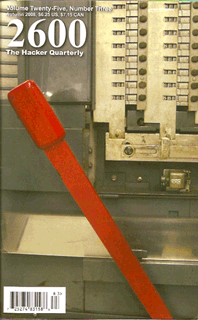If you use "tel:" in front of a telephone number (the way you use "mailto:" in front of an e-mail address), you can make the phone number linkable. Most people using a Mobile Phone Web Browser can click or tap on the number, and the phone will offer to dial the number. Some will offer to Text Message it as well. Here's an example:
<a href="tel:+1 321 543 8633">321-Liftoff</a>
If you need help in designing a web page for mobile phone
browsers, please give me a call:
321-Liftoff
Be sure to check out how the menu is done at:
http://M.CheshireCatalyst.Com and see how Cheshire puts up a Mobile Menu for mobile phone web browsers. (Don't forget to "View => Source")
The Cheshire Catalyst (Richard Cheshire) is the former publisher of the notorious TAP Newsletter of the radical 1970's and 80's. He has also attended (and volunteered at) every HOPE Conference we've ever held.
Shoutout - The mAltman.

